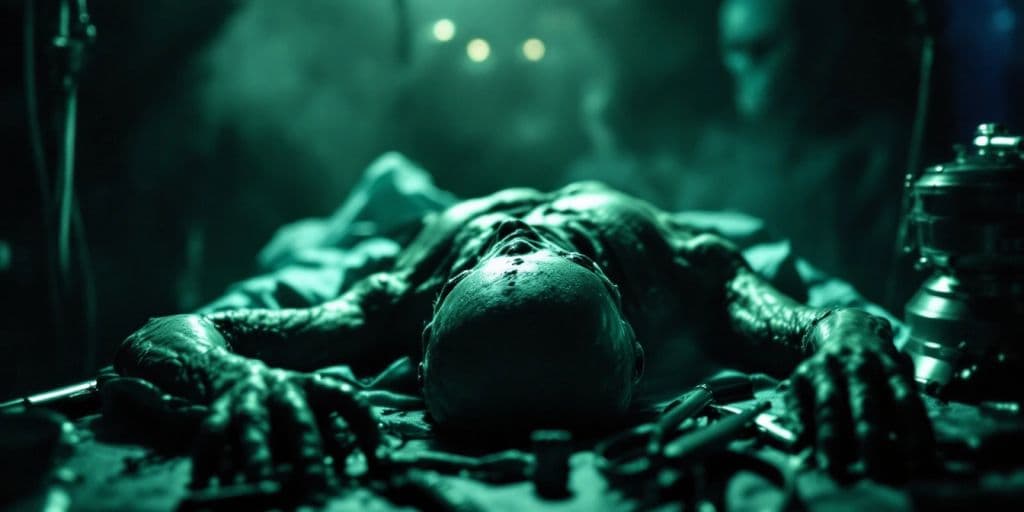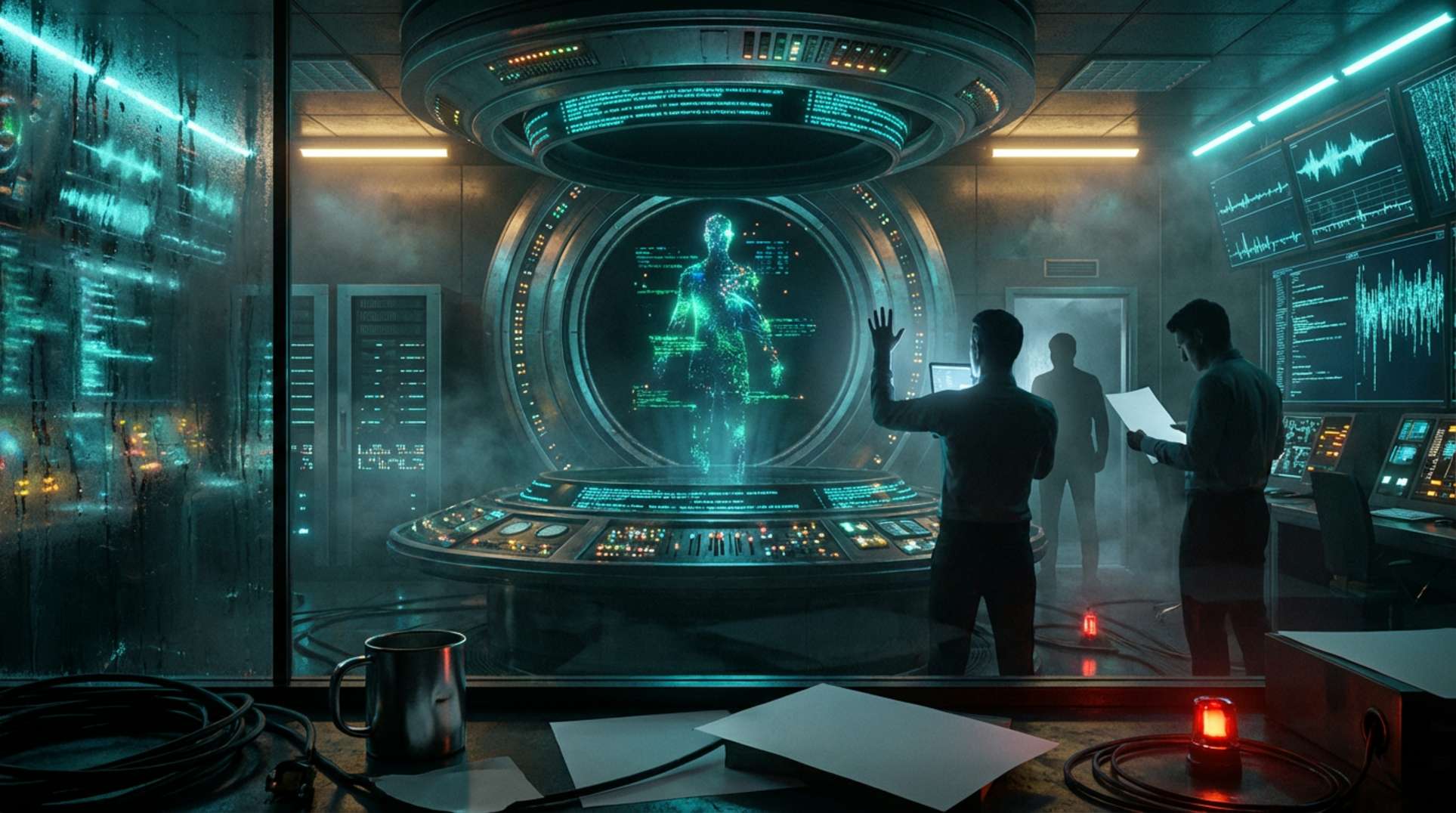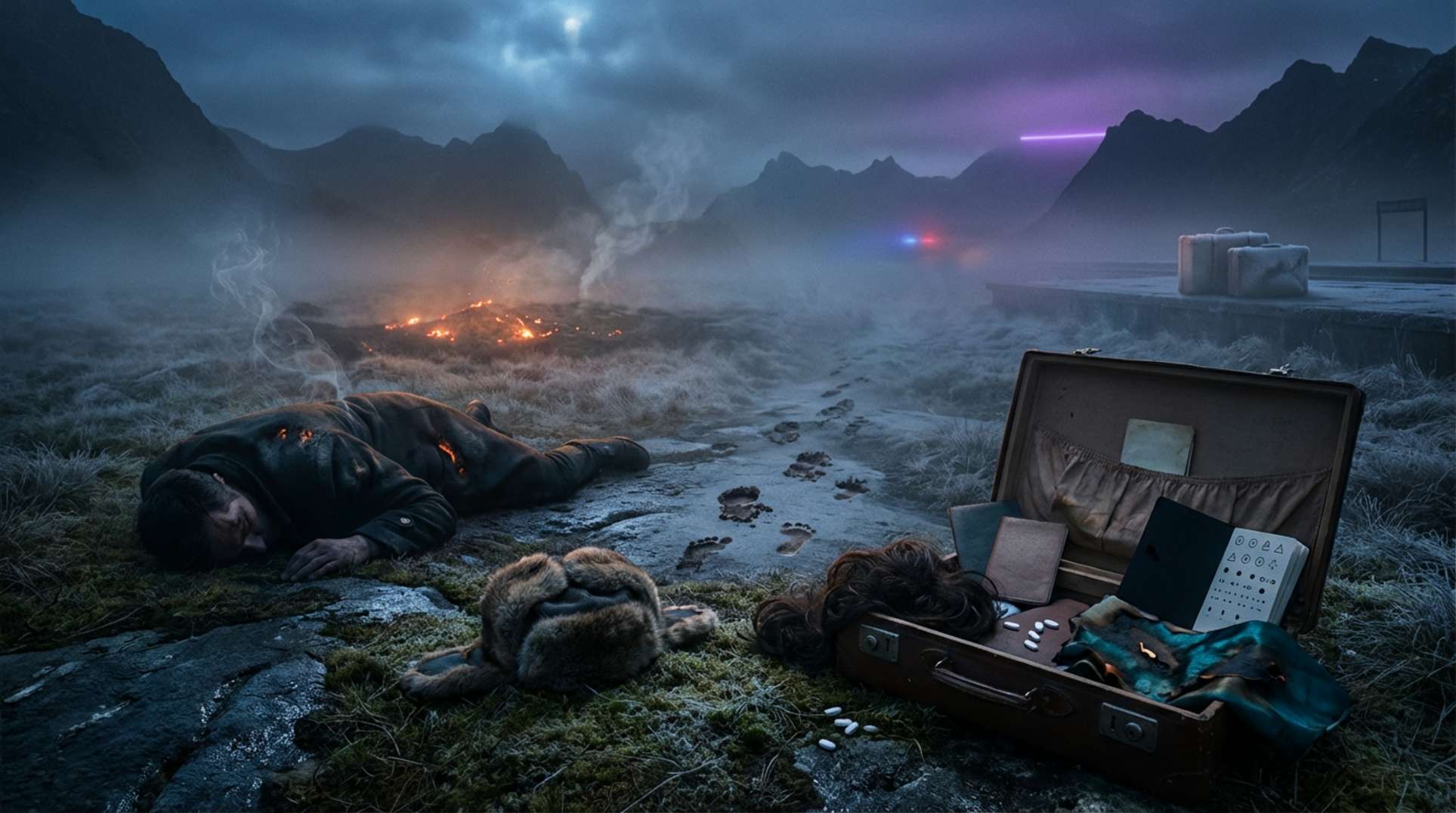The story of the alien autopsy footage is a fascinating blend of intrigue, deception, and cultural impact. Released in 1995, this footage claimed to show a real alien autopsy conducted shortly after the famous Roswell incident in 1947. However, as the years passed, it became clear that the footage was a hoax. This article explores the origins, implications, and lasting effects of the alien autopsy phenomenon.
Key Takeaways
- The alien autopsy footage was created by Ray Santilli in 1995 and later revealed to be a hoax.
- Initial public excitement turned into skepticism as evidence debunked the footage.
- The Roswell incident of 1947 remains a key part of UFO lore and conspiracy theories.
- The cultural impact of the footage influenced media, pop culture, and public interest in aliens.
- Despite the hoax, the fascination with extraterrestrial life continues to spark debate and curiosity.
The Origins of the Alien Autopsy Footage

Ray Santilli’s Claims
In 1995, British entrepreneur Ray Santilli released a video claiming to show an alien autopsy. He said the footage was filmed shortly after the Roswell incident in 1947. Santilli claimed he obtained the footage from a retired military cameraman, but he never revealed the cameraman’s identity. This lack of transparency raised many eyebrows and led to skepticism about the video’s authenticity.
Initial Public Reaction
When the footage aired, it quickly became a sensation. Millions tuned in to watch, and it sparked intense debate. Many viewers were fascinated, while others were skeptical. The public’s curiosity about extraterrestrial life was at an all-time high, fueled by pop culture and conspiracy theories. The video was even featured in a special on Fox, which attracted over 11 million viewers during its first airing.
Debunking Efforts
Despite its initial popularity, the alien autopsy footage faced significant criticism. Various experts and enthusiasts began to analyze the video, leading to claims that it was a hoax. In 1998, a documentary titled "The World’s Greatest Hoaxes and Secrets Revealed!" thoroughly debunked the footage. It was revealed that the alien bodies were actually hollow plaster casts filled with sheep brains and raspberry jam. In 2006, Santilli admitted on a documentary that the footage was fake, although he maintained it was inspired by real events.
The alien autopsy footage serves as a reminder of how easily misinformation can spread, especially in an age of heightened curiosity about the unknown.
Summary Table of Key Events
| Year | Event | Description |
|---|---|---|
| 1995 | Release of Footage | Santilli claims to show alien autopsy. |
| 1998 | Debunking Documentary | "The World’s Greatest Hoaxes" reveals the truth. |
| 2006 | Admission of Hoax | Santilli admits the footage was staged. |
This series of events highlights the complex relationship between public fascination and skepticism regarding alien encounters, particularly in the context of the Roswell incident.
The Roswell Incident and Its Connection to the Alien Autopsy
The 1947 Roswell Crash
In July 1947, something unusual happened near Roswell, New Mexico. A rancher discovered strange debris on his land. The military quickly claimed it was a weather balloon, but many people believed it was a crashed UFO. This incident sparked a lot of UFO sightings and conspiracy theories.
Government Cover-Ups
Many people think the government was not honest about what really happened. Some believe they created the weather balloon story to hide the truth about an alien spacecraft. This idea has led to a lot of speculation about what the government knows about alien encounters.
Eyewitness Accounts
Numerous eyewitnesses have come forward over the years, claiming they saw the crash site and even alien bodies. Some of these accounts include:
- Military personnel who were involved in the recovery.
- Local residents who reported seeing strange lights in the sky.
- Researchers who have investigated the incident.
The Roswell incident is more than just a story; it’s a cornerstone of modern UFO lore, sparking endless debates and inspiring countless works of fiction.
The Roswell Incident continues to be a topic of fascination, drawing thousands of visitors to its annual UFO festival. The connection between this event and the later alien autopsy footage has kept the mystery alive, fueling ongoing interest and speculation about extraterrestrial life.
Technological Implications of Alleged Alien Autopsies
Reverse Engineering Claims
The idea of reverse engineering alien technology has fascinated many. Some believe that if we could study alien technology, it might lead to breakthroughs in our own science. Here are some key points:
- Potential for new materials: Discovering advanced materials could revolutionize industries.
- Energy sources: Understanding alien energy systems might help us develop cleaner energy.
- Medical advancements: Insights into alien biology could lead to new medical treatments.
Medical Advancements
The alleged alien autopsy footage sparked discussions about possible medical advancements. Some enthusiasts argue that studying alien biology could:
- Improve surgical techniques.
- Enhance our understanding of diseases.
- Lead to the development of new medical devices.
Skeptical Perspectives
Despite the excitement, many experts remain skeptical. They argue that the claims of alien technology are often exaggerated. Here are some common skeptical views:
- Lack of evidence: Most claims are based on speculation rather than solid proof.
- Technological limitations: Current technology may not be advanced enough to understand alien tech.
- Psychological factors: Many believe that the fascination with alien technology stems from human imagination rather than reality.
The quest for understanding alien technology reflects humanity’s enduring curiosity about the universe.
In conclusion, while the idea of alien autopsies raises intriguing possibilities for technological advancements, it is essential to approach these claims with a critical mindset. The balance between curiosity and skepticism is crucial in exploring the unknown.
Cultural Impact of the Alien Autopsy Footage

Media Coverage and Public Fascination
The alien autopsy footage captured the public’s imagination when it aired in 1995. It was a time when people were already curious about extraterrestrial life. The film was shown on major networks, leading to a massive audience. Many viewers were glued to their screens, eager to see what was presented as real evidence of alien life. The excitement was palpable, and it sparked discussions across various platforms.
Influence on Pop Culture
The alien autopsy footage influenced many aspects of pop culture. It was parodied in shows like The X-Files, where characters humorously critiqued the authenticity of such footage. The film also inspired a comedy movie titled Alien Autopsy in 2006, which fictionalized the events surrounding the original footage. This shows how deeply the footage penetrated popular culture, becoming a reference point for discussions about aliens.
Skepticism and Parody
Despite its initial popularity, skepticism grew over time. Many people began to question the authenticity of the footage. Various documentaries and specials, such as Alien Autopsy: Fact or Fiction?, aimed to debunk the claims made by its creators. This led to a wave of parody and satire, as the footage became a symbol of hoaxes in the realm of alien encounters.
The alien autopsy footage serves as a reminder of how easily public perception can be shaped by media, leading to both fascination and skepticism.
| Year | Event | Impact |
|---|---|---|
| 1995 | Original footage aired | Sparked public interest |
| 1996 | Parody in The X-Files | Critiqued authenticity |
| 2006 | Alien Autopsy film | Fictionalized the story |
| 2008 | Debunking documentaries | Increased skepticism |
The Legacy of the Alien Autopsy Hoax
Admission of the Hoax
In 2006, Ray Santilli, the man behind the infamous footage, finally admitted that the alien autopsy video was a hoax. This revelation shocked many who had believed in its authenticity for over a decade. Santilli claimed that the footage was inspired by real events but was ultimately fabricated. This admission marked a significant moment in the history of UFO hoaxes, as it highlighted the lengths to which people would go to create a believable story.
Lessons Learned
The alien autopsy hoax taught us several important lessons:
- Skepticism is crucial: Always question the source of sensational claims.
- Media responsibility: Media outlets should verify the authenticity of content before broadcasting.
- Public curiosity: The public’s fascination with aliens and UFOs can lead to widespread belief in hoaxes.
Ongoing Speculation and Interest
Even after the hoax was revealed, interest in the alien autopsy footage did not fade. Many still discuss its implications and the possibility of real extraterrestrial encounters. The hoax has become a part of pop culture, inspiring numerous parodies and references in various media. The debate over the existence of aliens continues, fueled by the alien autopsy hoax and similar incidents.
The alien autopsy hoax serves as a reminder of how easily misinformation can spread and the importance of critical thinking in the age of information.
Comparative Analysis: Other Famous Alien Hoaxes
The Bob White Artifact
The Bob White artifact is a notable case in the world of alien hoaxes. In 1985, Bob White claimed to have found an object dropped by a UFO. Despite extensive analysis, the government denied its extraterrestrial origins. This incident highlights how public fascination can lead to widespread belief in hoaxes.
The Baltic Sea Anomaly
Another intriguing case is the Baltic Sea anomaly, discovered in 2011. Some believed it to be a sunken UFO due to its unusual shape. However, experts later identified it as a natural formation. This incident shows how misinterpretation can fuel alien theories.
The Skinny Bob Footage
The Skinny Bob footage, released in 2011, purported to show an alien being interrogated. While it gained significant attention, many experts quickly debunked it as a hoax. This case illustrates the power of digital media in spreading misinformation.
| Hoax Name | Year | Description | Outcome |
|---|---|---|---|
| Bob White Artifact | 1985 | Claimed UFO object found | Denied by government |
| Baltic Sea Anomaly | 2011 | Believed to be a UFO, later identified | Natural formation |
| Skinny Bob Footage | 2011 | Alleged alien interrogation footage | Debunked as a hoax |
The fascination with alien hoaxes reveals our deep-seated curiosity about the unknown. Whether real or fabricated, these stories continue to captivate our imagination.
Psychological and Sociological Effects of Alien Autopsy Claims
Public Perception of Extraterrestrial Life
The alien autopsy claims have significantly shaped how people view extraterrestrial life. Many individuals now consider the possibility of alien existence more seriously. This shift in perception can be attributed to several factors:
- Increased media coverage of UFOs and alien encounters.
- The rise of social media, allowing for rapid sharing of information.
- Documentaries and films that explore alien themes, making them more relatable.
Impact on Conspiracy Theories
The alien autopsy footage has fueled numerous conspiracy theories. These theories often suggest that governments are hiding the truth about extraterrestrial life. Some common themes include:
- Government cover-ups of alien encounters.
- Claims of reverse engineering alien technology.
- Speculation about secret military projects involving aliens.
Role of Media in Shaping Beliefs
Media plays a crucial role in shaping public beliefs about aliens. The portrayal of alien encounters in films and TV shows often blurs the line between fact and fiction. This can lead to:
- Increased fascination with the unknown.
- A tendency to believe in hoaxes, like the alien autopsy.
- A culture of skepticism, where people question the authenticity of all claims.
The fascination with aliens reflects a deeper human desire to understand our place in the universe. As we explore these claims, we must remain critical and open-minded.
Claims about alien autopsies can have a big impact on how people think and feel. These stories can stir up curiosity, fear, or even excitement in society. If you want to learn more about these fascinating topics and explore deeper insights, visit our website for a treasure trove of information!
Conclusion
In wrapping up our look into the secrets of alien technology, it’s clear that the mysteries of extraterrestrial encounters and advanced tech are still not fully understood. From the fascinating ideas about reverse-engineered alien crafts to the scary stories of abductions and hidden bases, there’s a lot of information that keeps both researchers and fans interested. Some findings suggest a friendly sharing of knowledge, while others point to more troubling motives. The search for answers about these strange events is still going on, and as new facts come to light, they make us rethink what we know about our world. Keep being curious, stay updated, and keep exploring the mysterious realm of alien technology.
Frequently Asked Questions
What is the story behind the Alien Autopsy footage?
The Alien Autopsy footage was released in 1995 by Ray Santilli, claiming it showed an autopsy of an alien from the Roswell incident in 1947. It became very popular but was later revealed to be a hoax.
Why did people believe the Alien Autopsy was real?
Many people believed it was real due to its dramatic presentation and the timing of its release, which coincided with a growing interest in UFOs and aliens.
How was the Alien Autopsy footage created?
The footage was filmed in a London flat using fake alien bodies made from plaster and filled with animal parts. It was designed to look convincing but was not real.
What were the reactions to the Alien Autopsy when it aired?
When it aired, the footage sparked intense debate and curiosity, leading to high viewership and discussions about aliens and government cover-ups.
What have experts said about the Alien Autopsy?
Experts and skeptics have pointed out many flaws in the footage, including how the alien body was manipulated, raising doubts about its authenticity.
What is the legacy of the Alien Autopsy hoax?
The hoax has become a significant part of UFO culture, influencing media portrayals of aliens and leading to ongoing discussions about what is real and what is not.




